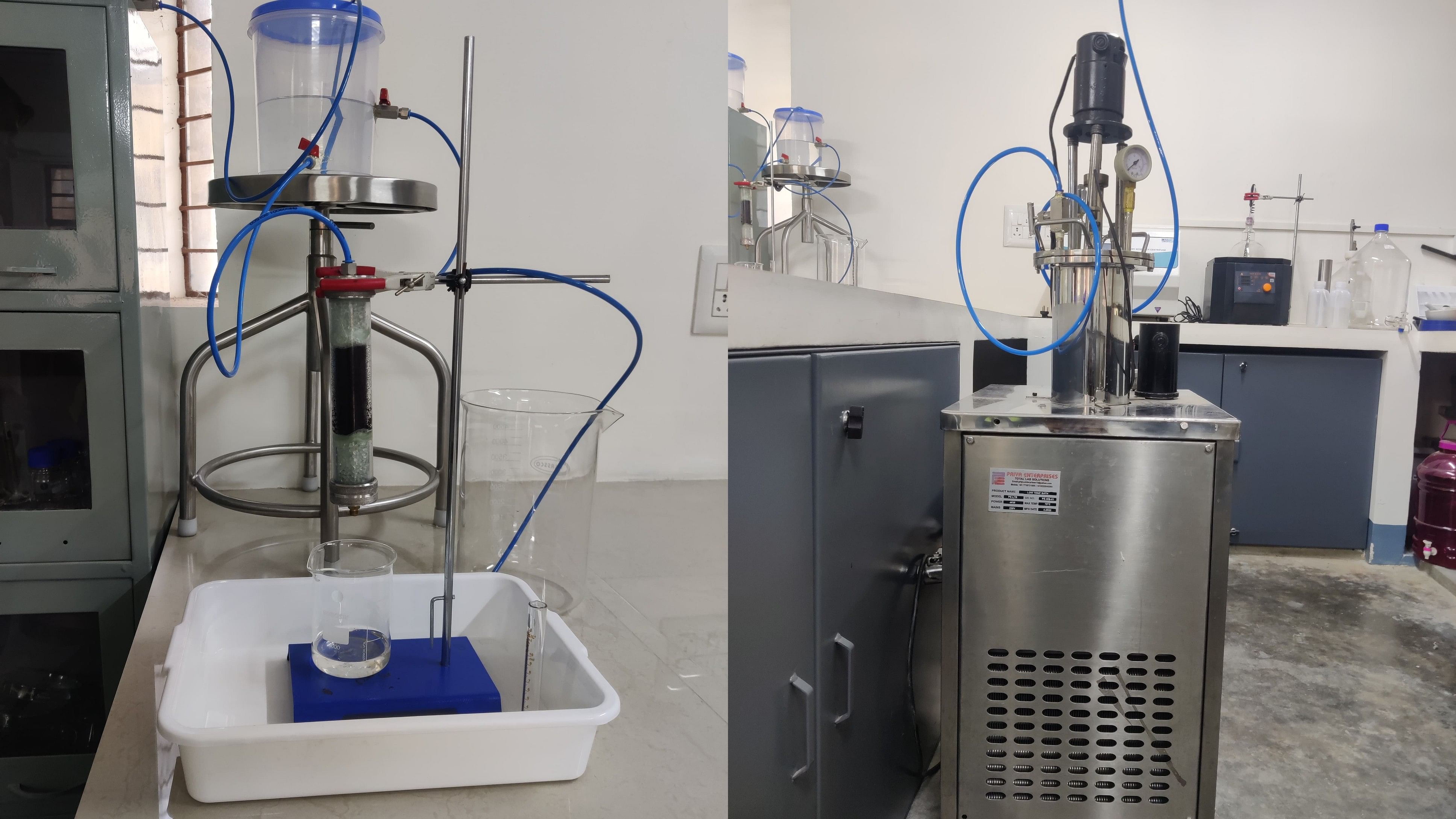
The absorbent stage and remediation stage (right) in the pilot system.
Credit: IISc
Bengaluru: A new process for removing heavy metal contaminants like arsenic from groundwater developed at the Indian Institute of Science (IISc), is also turning out to be a promising sustainable disposal of these contaminants.
The patent-pending, three-step method developed by researchers at the Centre for Sustainable Technologies (CST) ensures that the removed metals do not end up in untreated sludge that reaches landfills from where they can re-enter groundwater.
Yagnaseni Roy, Assistant Professor at CST, whose lab has developed the method, said while existing technologies do take out arsenic and provide clean water, they do not come with measures that prevent the arsenic from re-entering the environment.
"Our process was designed to solve this problem,", she said. IISc said the first two steps involved separation of arsenic from the contaminated water using a bed of biodegradable absorbent, before the metal being taken to the critical third step – bioremediation - the process of reducing the concentration of pollutants.
In this phase, the toxic inorganic arsenic is converted to low-toxicity organic arsenic via methylation by microbes found in cow dung. This process brings down the level of toxic inorganic arsenic to below the maximum permissible limit specified by World Health Organisation (WHO) standards, within a span of eight days.
The remaining cow dung sludge, with arsenic in an organic form, can be safely disposed of in landfills, IISc said. Citing a report by the Central Ground Water Board on the quality of groundwater in India’s shallow aquifers, IISc noted that 113 districts in 21 states have arsenic levels above 0.01 mg per litre, while 223 districts in 23 states have fluoride levels above 1.5 mg per litre, which are beyond the permissible limits set by the Bureau of Indian Standards and WHO.
These contaminants can significantly affect human and animal health, necessitating their efficient removal and safe disposal. "On average, these organic species are approximately 50 times less toxic than the inorganic form present in groundwater", Roy said.
The researchers, currently exploring the potential of the system in tackling other heavy metals, said the system would work best at the community level for easier collection of waste, maintenance, and operation. In the lab, a small pilot-scale adsorption column system was able to generate safe drinking water for two people for three days, IISc said.
The researchers have been working with NGOs INREM Foundation and Earthwatch to deploy and test these systems in rural areas including Bhagalpur in Bihar and Chikkaballapur in Karnataka.
"The maintenance is simple enough that it can be operated by people in the community itself, which will help with income generation for people operating the system", Rasmi Mohan T, PhD student at CST who has worked on the process, said. Master’s student Subhash Kumar and post-doctoral fellow Manamohan Tripathy were also involved in developing the system.